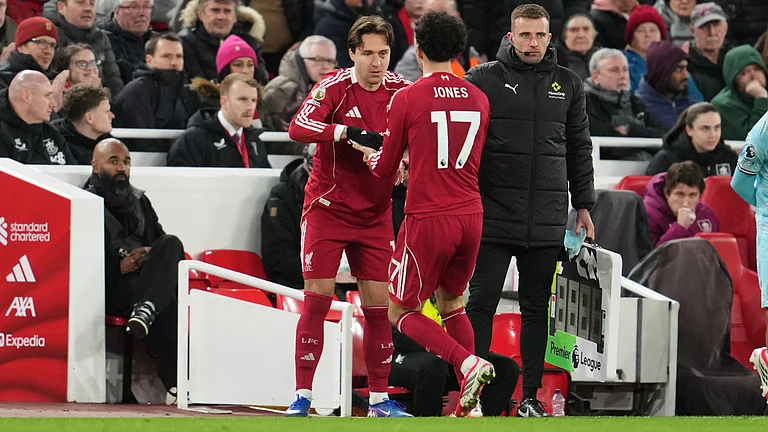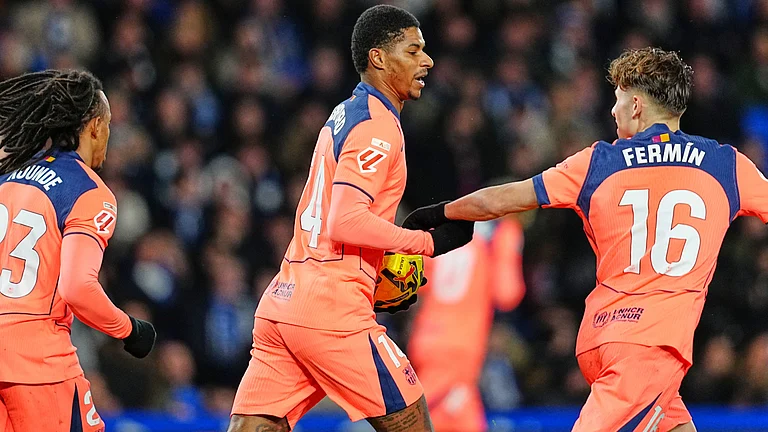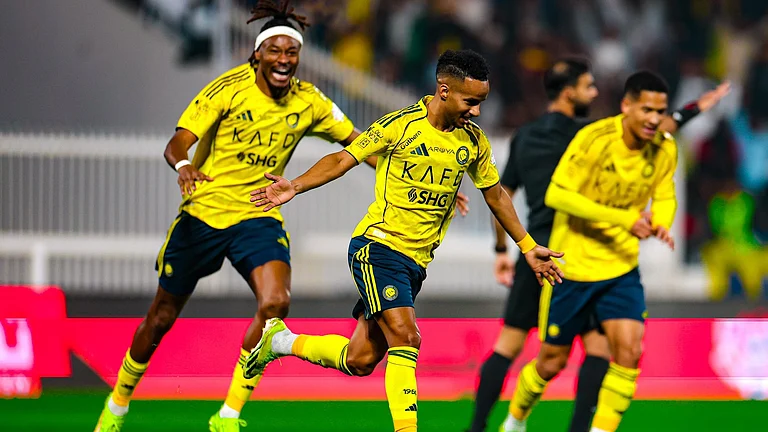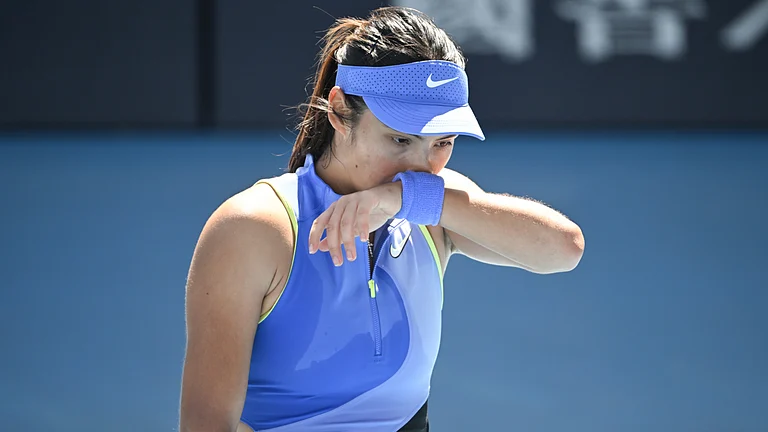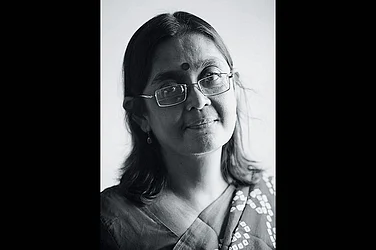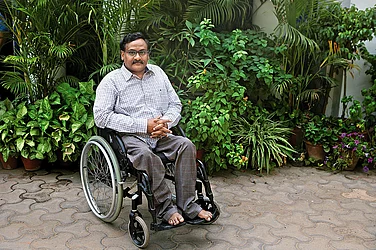Legend has it that the aerial commute of Hanuman, Ram’s mighty lieutenant, back from the Himalayas to Lanka, led to the formation of the Sahyadri mountains, which gives the Konkan region its distinct geographic identity.
Crumbs of earth from the freshly uprooted Dronagiri mountain, which was being ferried by the monkey god from the Himalayas fell to Lanka, fell along the western edge of the Indian peninsula, creating the Sahyadri range which spans across Maharashtra, Goa, Karnataka and parts of Kerala.
Cushioned by Sahyadri range, whose taller peaks scale up to 1,500 meters above sea level, the multi-state Konkan region has spawned cultural practices and tradition, with its own stamp of uniqueness. The Dashavatar natak (theatre), is one such tradition which venerates the 10 avatars of Lord Vishnu, that owes its origins to Yakshagana, another dramatic art form birthed in the Konkan region in northern Karnataka between the 11th and 16th century AD.
In south Maharashtra, where the Dashavatar natak set root, before crossing over into Goa, theatre artistes till date continue to pay their obeisance to Shyamji Naik Kale, who first introduced the inspired art form to Maharashtra in the mid-1700s at the Mahakali temple in Ratnagiri district’s Adivare village.
Traditionally, Dashavatar theatre is performed twice every year, in the month of Chaitra (around March and April) and on the occasion of Kartik Pournima (in November and December) of the Hindu almanac.

Shigmotsava is a popular Hindu folk festival which takes place around April and also presents itself as an occasion for a Dashavatar performance. At 38, Sachin Khutwalkar is already a veteran of several Dashavatar plays. He hasn’t played the role of Ram yet, but he did step into Ravana’s shoes last year.
The scene enacted by Khutwalkar and co. the subsequent year, involved a poignant moment in the Ramayana, where a brooding Ravana, considers his options, after losing his siblings and his son Meghnad in battle, before deploying his nephews Ahi and Mahi as the last throw of his dice.
But playing Ravana, according to Khutwalkar, a journalist by day, exposed him to the mythical villain’s lesser quoted qualities, like his mastery over the vedas and his commitment to principles. So much so, that the master of the scriptures, Ravana, according to one version of the Ramayana, he says, even agrees to perform a yagna for Rama, for the success of his Lanka assault.
“After he performed that puja, Rama had to touch Ravana’s feet and seek blessings from the latter, for the Lanka mission’s success. Ravana knew, that the moment he gave Rama the blessing, his death was imminent. And yet, Ravana gave him the blessing, despite knowing it,” says Khutwalkar, who hails from Maharashtra’s Morlem village.

Like Khutwalkar, septuagenarian Damodar Joshi has also dabbled on stage as Ravana. He is one of the three popular ‘Dashavatari’ actors from Goa, who continue to be in demand in Maharashtra during performances.
Other than Joshi, Harish Chandra was known for his lead roles, Suryakant Rane was a noted character actor and Joshi loved to play villains like Ravana, Duryodhana, Yama and other sundry asuras.
“I have never played Ram. But if someone is staging a Ramayana performance at a Dashavatar, then I am a preferred choice for Ravana,” Joshi said.
Joshi retired from acting in Dashavatar plays in 2007, but he still takes up the odd role in Maharashtra. The audience in Goa, he says, is not too clued into such performances.
“Audiences in Maharashtra are more well versed with Dashavatar performances than in Goa. They react to my performances better. For Goans, it’s more like, ‘hey this is just one of our own on stage’. They do not value a good performance much,” Joshi said.
In Goa, this form of theatre, also referred to as the kaalo has several variants according to Tanvi Shridhar Kamat Bambolkar, in her doctorate thesis ‘Folk Theatre In Goa: A Critical Study Of Select Forms’.
“Kaalo has two major variants. One if Dashavtari Kaalo, also known as Dashavtari Khell and another is Shankasur Kaalo. As the name suggests, Dashavtaari includes the tales of ten incarnations of Lord Vishnu, whereas, Shankhasur Kaalo gets its name from one of the significant characters from Kaalo i.e. Shankasur,” Bambolkar says.
Dashavatar theatre is popular in Hindu-dominated pockets in the state like the sub districts of Sattari, Ponda and Canacona. Vishnu’s matsya avatar, where the God took the form of a fish to defeat the demon Shankasur is a recurring theme on Goan stage and the other is Krishna. Historically, the Hindu dominated pockets in Goa are those which were not part of the early Portuguese conquest, which were followed by religious conversion expeditions by the Catholic clergy.
“The first act in a Dashavatar in Goa features the demon Shankasur, who steals Brahmadev’s Vedas and hides it in a secret place. Vedas are representative of knowledge and the Gods are troubled by the fact that they have been stolen. Vishnu takes the responsibility of retrieving them. He locates Shankasur in the deep sea and takes the avatar of a fish or matsya to recover the vedas and slay Shankasur,” folklore historian Dr. Pandurang Phaldesai told Outlook.
Before the 1990s, the various local forms of Dashavatar would be performed in around 350 temples in the state. Vivekanand Verekar was born in 1961 and has memories of his childhood, when the ground he stood on, along with hundreds of others, would reverberate as the actors playing Mahadev and Parvati walked to their neighbourhood temple in Savoi Verem village in Ponda, to the beat of drums.
“They would walk from the pujari’s house to the temple, along a small pathway. Shankar used to dance all along the path to the beat of drums, which would make the earth shake,” Verekar said.
Incidentally, Rama for long, was one of the less popular Vishnu avatars to be enacted on stage in Goa. According to Phaldesai, there are barely around five to six temples in Goa, where Rama is the prime deity.
He claims that dearth of temples dedicated to Rama and the near absence of Vishnu’s Rama-avatar in Dashavatar theatre in the state, could be on account of the delayed arrival of the Vaishnava influence in the western state.
There are legends associated with Rama though, he says, citing Cabo de Rama, a fort in south Goa, mounted on a small fringe of rocks jutting out into the Arabian sea.
“Cabo de Rama is also referred to as Rama’s Bhushir (Bhu=earth shir=strip). A strip of land stretching into the sea. When he was heading for Lanka, it is believed that he rested there for some time with Lakshman,” he says.
Phaldesai however said that the revival of Rama in the country’s national consciousness, after the Ram Janmabhoomi campaign orchestrated by the BJP, had triggered increased veneration of the deity in the state.
He however expressed concerned about a sense of dwesh (grudge) which is slowly seeping into society, in view of the heightened religious tonalities of the campaign.
“This dwesh can result in enmity. It is not a positive sign. But fact is that Ram is being viewed as a key component of national identity. If one views it from the prism of society, I find it appropriate,” he said.







